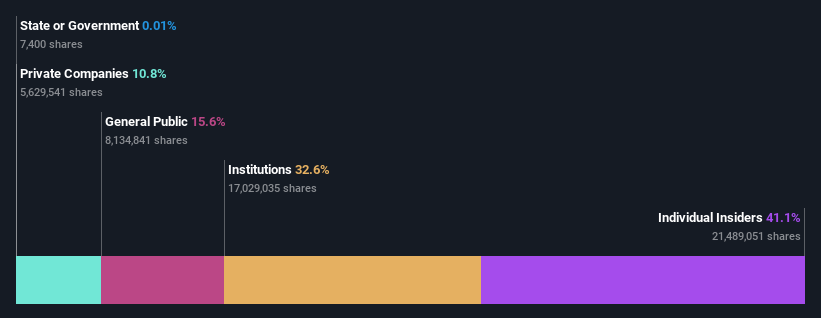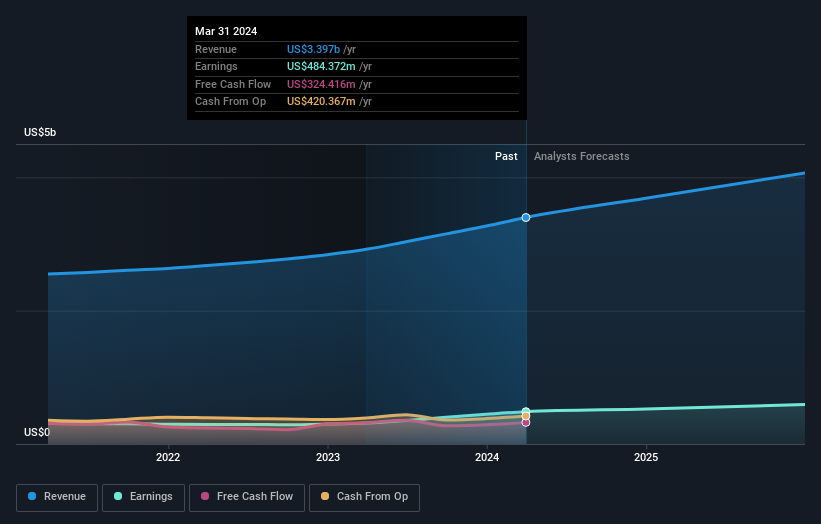Stock Analysis
- United States
- /
- Insurance
- /
- NasdaqGS:ERIE
Although Erie Indemnity Company (NASDAQ:ERIE) insiders have sold lately, they have the highest ownership with 41% stake

Key Insights
- Insiders appear to have a vested interest in Erie Indemnity's growth, as seen by their sizeable ownership
- 53% of the business is held by the top 3 shareholders
- Insiders have been selling lately
Every investor in Erie Indemnity Company (NASDAQ:ERIE) should be aware of the most powerful shareholder groups. We can see that individual insiders own the lion's share in the company with 41% ownership. That is, the group stands to benefit the most if the stock rises (or lose the most if there is a downturn).
And insiders own the top position in the company’s share registry despite recent sales.
In the chart below, we zoom in on the different ownership groups of Erie Indemnity.
Check out our latest analysis for Erie Indemnity

What Does The Institutional Ownership Tell Us About Erie Indemnity?
Institutions typically measure themselves against a benchmark when reporting to their own investors, so they often become more enthusiastic about a stock once it's included in a major index. We would expect most companies to have some institutions on the register, especially if they are growing.
We can see that Erie Indemnity does have institutional investors; and they hold a good portion of the company's stock. This implies the analysts working for those institutions have looked at the stock and they like it. But just like anyone else, they could be wrong. If multiple institutions change their view on a stock at the same time, you could see the share price drop fast. It's therefore worth looking at Erie Indemnity's earnings history below. Of course, the future is what really matters.

Erie Indemnity is not owned by hedge funds. Our data shows that Thomas Hagen is the largest shareholder with 33% of shares outstanding. H.O. Hirt Trusts is the second largest shareholder owning 11% of common stock, and PNC Financial Services Group Inc., Banking Investments holds about 9.4% of the company stock.
A more detailed study of the shareholder registry showed us that 3 of the top shareholders have a considerable amount of ownership in the company, via their 53% stake.
Researching institutional ownership is a good way to gauge and filter a stock's expected performance. The same can be achieved by studying analyst sentiments. There is some analyst coverage of the stock, but it could still become more well known, with time.
Insider Ownership Of Erie Indemnity
While the precise definition of an insider can be subjective, almost everyone considers board members to be insiders. Company management run the business, but the CEO will answer to the board, even if he or she is a member of it.
I generally consider insider ownership to be a good thing. However, on some occasions it makes it more difficult for other shareholders to hold the board accountable for decisions.
Our most recent data indicates that insiders own a reasonable proportion of Erie Indemnity Company. Insiders own US$8.5b worth of shares in the US$21b company. That's quite meaningful. It is good to see this level of investment. You can check here to see if those insiders have been buying recently.
General Public Ownership
The general public, who are usually individual investors, hold a 16% stake in Erie Indemnity. This size of ownership, while considerable, may not be enough to change company policy if the decision is not in sync with other large shareholders.
Private Company Ownership
It seems that Private Companies own 11%, of the Erie Indemnity stock. It's hard to draw any conclusions from this fact alone, so its worth looking into who owns those private companies. Sometimes insiders or other related parties have an interest in shares in a public company through a separate private company.
Next Steps:
I find it very interesting to look at who exactly owns a company. But to truly gain insight, we need to consider other information, too. Consider for instance, the ever-present spectre of investment risk. We've identified 1 warning sign with Erie Indemnity , and understanding them should be part of your investment process.
If you are like me, you may want to think about whether this company will grow or shrink. Luckily, you can check this free report showing analyst forecasts for its future.
NB: Figures in this article are calculated using data from the last twelve months, which refer to the 12-month period ending on the last date of the month the financial statement is dated. This may not be consistent with full year annual report figures.
Valuation is complex, but we're helping make it simple.
Find out whether Erie Indemnity is potentially over or undervalued by checking out our comprehensive analysis, which includes fair value estimates, risks and warnings, dividends, insider transactions and financial health.
View the Free AnalysisHave feedback on this article? Concerned about the content? Get in touch with us directly. Alternatively, email editorial-team (at) simplywallst.com.
This article by Simply Wall St is general in nature. We provide commentary based on historical data and analyst forecasts only using an unbiased methodology and our articles are not intended to be financial advice. It does not constitute a recommendation to buy or sell any stock, and does not take account of your objectives, or your financial situation. We aim to bring you long-term focused analysis driven by fundamental data. Note that our analysis may not factor in the latest price-sensitive company announcements or qualitative material. Simply Wall St has no position in any stocks mentioned.
About NasdaqGS:ERIE
Erie Indemnity
Operates as a managing attorney-in-fact for the subscribers at the Erie Insurance Exchange in the United States.
Outstanding track record with flawless balance sheet and pays a dividend.


